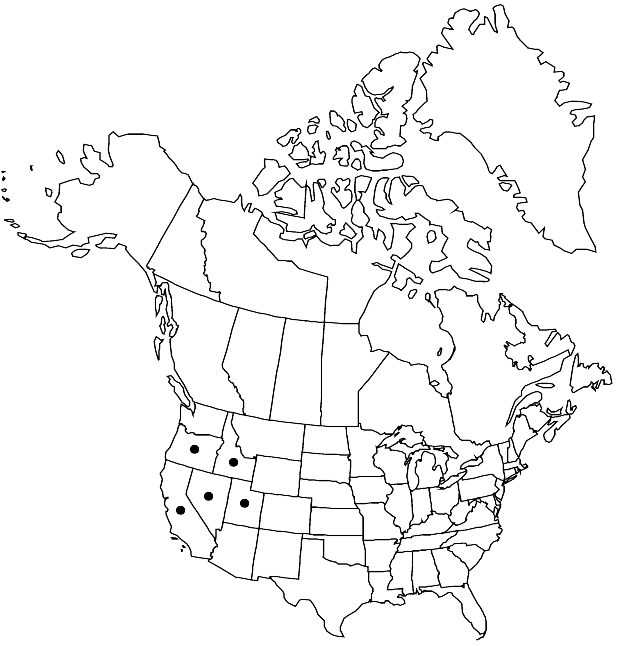Caulanthus pilosus
Botany (Fortieth Parallel), 27. 1871.
Biennials; moderately to densely pilose. Stems erect or ascending, unbranched or branched distally, 2–12 dm. Basal leaves rosulate; petiole 1–8 cm; blade oblanceolate or oblong (in outline), 2–24 cm × 5–90 mm, margins usually pinnatifid to pinnatisect, rarely dentate-sinuate (lobes dentate). Cauline leaves (distalmost) shortly petiolate; blade linear to narrowly oblanceolate, margins entire or dentate. Racemes (densely flowered), without a terminal cluster of sterile flowers, (sometimes proximalmost flowers bracteate). Fruiting pedicels ascending, 4–18 mm, glabrous or pilose. Flowers: sepals erect, (dark purple in bud becoming paler or greenish), narrowly ovate to lanceolate, 4.5–9.5 × 1.5–2 mm, (equal); petals purple, 7–12 mm, blade 3–4 × 1–1.5 mm, crisped, claw oblanceolate to spatulate, 4–9 × 1–2 mm; filaments tetradynamous, median pairs 4.5–10 mm, lateral pair 3–8.5 mm; anthers narrowly oblong, equal, 2–3.5 mm. Fruits ascending to divaricate, terete, 2–18 cm × 1–1.5 mm; valves each with obscure midvein; ovules 152–198 per ovary; style obsolete or, rarely, to 1 mm; stigma slightly 2-lobed. Seeds 1–2 × 0.7–1 mm.
Phenology: Flowering late Mar-early Jul.
Habitat: Flats, rocky slopes, scrub and sagebrush communities, pinyon-juniper woodland
Elevation: 600-2800 m
Distribution

Calif., Idaho, Nev., Oreg., Utah.
Discussion
Caulanthus pilosus is found in northeastern California, southwestern Idaho, Nevada, eastern and southern Oregon, and western Utah.
Selected References
None.